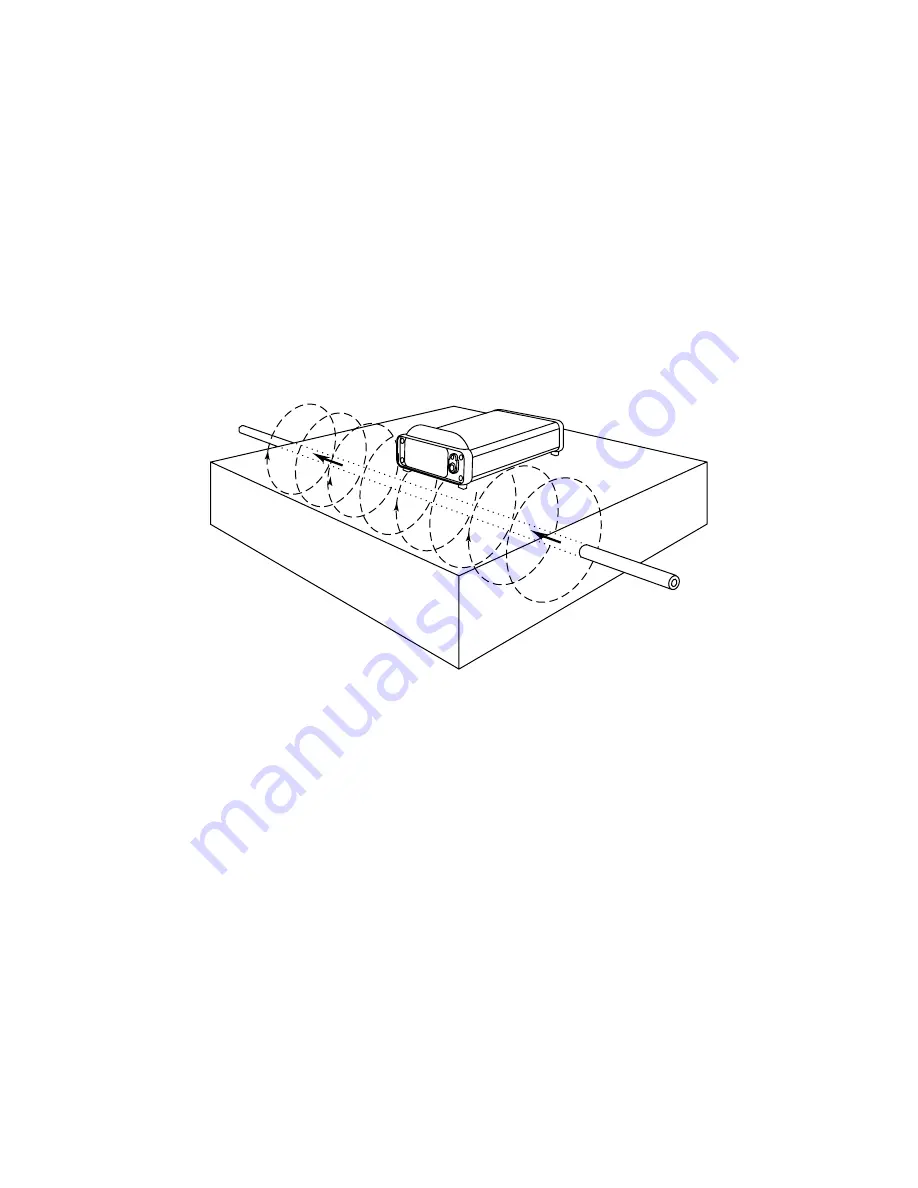
Cable location with the SuperC.A.T and T1
Transmitter
Induction Mode
The Transmitter has an internal aerial that will induce a signal onto a line
(or lines) directly below it. This is useful when you do not have direct
access to the line. Generally, induction is only effective to depths of 2m
(6’6”). Note that the induction mode is indiscriminate and will apply a
signal to all conductors within its range.
Induction is only available with frequencies 8kHz and above.
Procedure
Place the Transmitter over the approximate position of the line with
arrows pointing parallel to the line. Set SuperC.A.T Receiver sensitivity
to 50
%
and start locating the line at least 10 meters away from the
Transmitter. Mark the ground when the Receiver detects any
signal spike.
Note:
Induction cannot apply a signal to a line below reinforced concrete.
The SuperC.A.T may detect the transmitter signal directly from the T1
rather than the target line, so do not attempt depth measurements
within 10 meters of the transmitter.
To check if you are detecting a signal from the T1, point the Receiver
directly at the transmitter. If the Receiver signal strength increases,
either reduce the transmitter power or increase the distance between
you and the transmitter.
If the Receiver signal strength decreases, the signal is from the
buried line.
Direct Connection
Direct connection allows you to apply a signal directly onto a specific
line. Direct connection is suitable for use on continuous tracer wire,
water and gas distribution systems, a telecom cable, and pipeline at a
CP test or other access point.
Procedure
First Plug the Connection Cable into the Transmitter and then clamp the
terminals onto the target cable or pipeline. If necessary clean off paint,
rust or scale to ensure good connection.






























